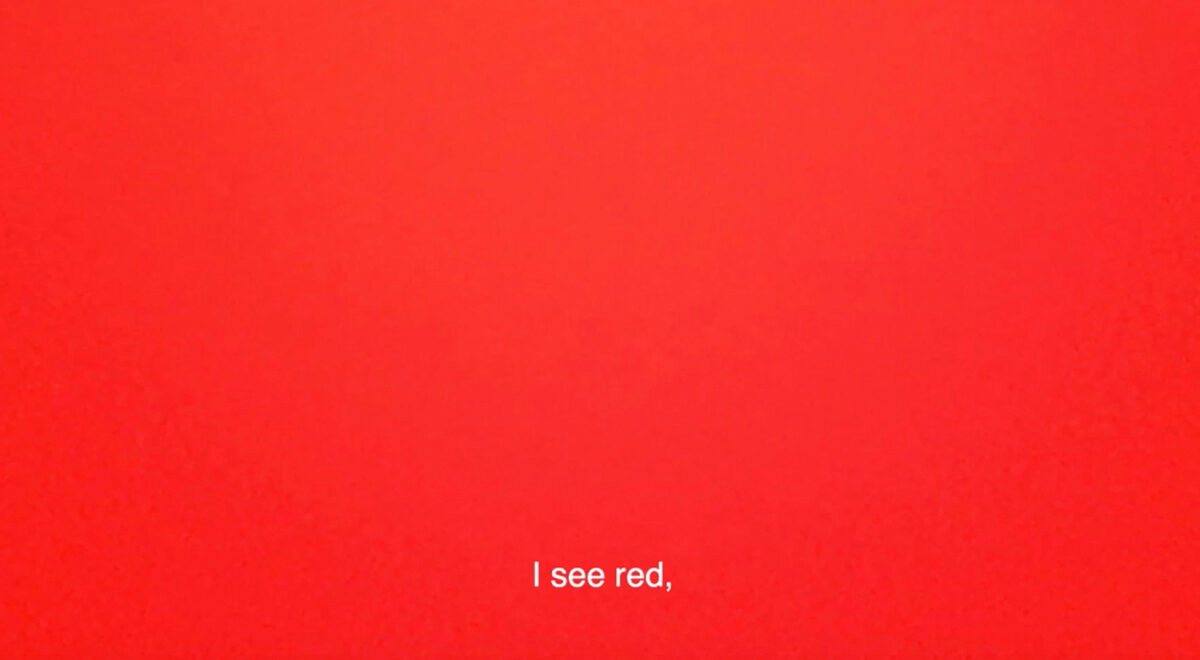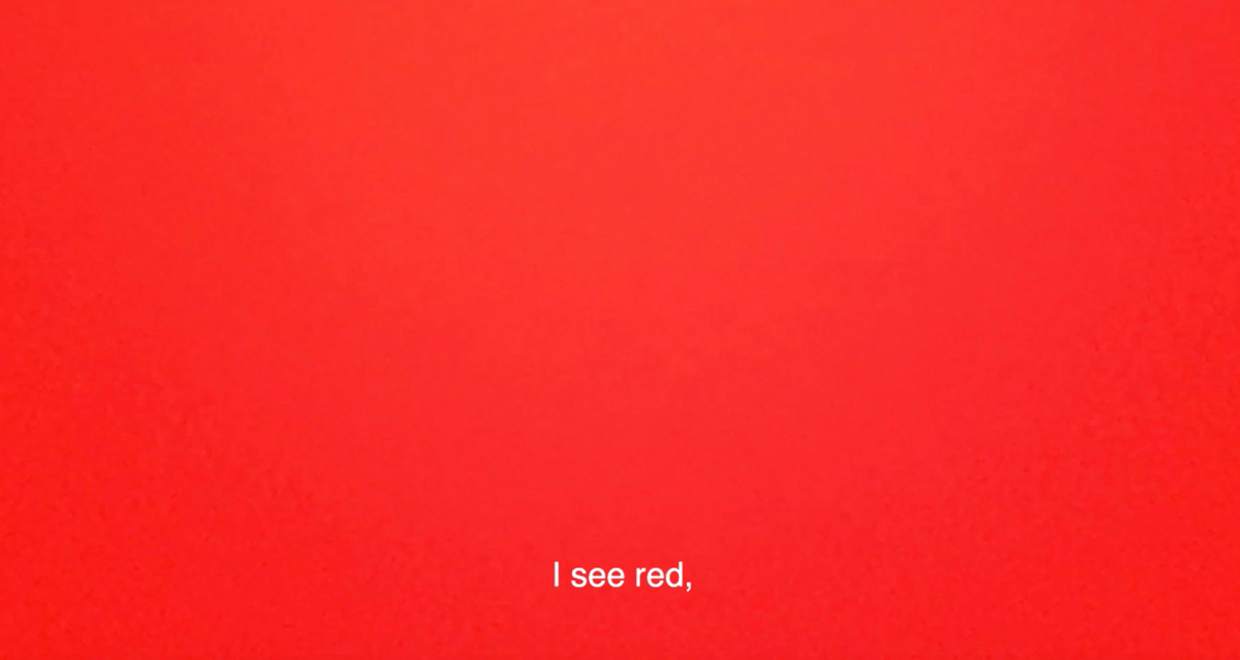In Vedo rosso the images are barely there: the screen is filled with a pulsating red that, for just a few moments, is interrupted by the appearance of an eye. The almost paradoxical choice to address the drama of domestic violence through the negation of images suggests the “impossibility” of telling this story: the red is created by a finger blocking the cell phone camera, as if by mistake, a common problem when recording. It is as if the phone lens were unable to film the domestic realm and were constantly being thwarted, driven back into a claustrophobic place.
The eyes that fleetingly appear come from video portraits of Syrian refugee women that Paci filmed in Beirut in 2018: once again, we are looking at a kind of movement—migration, in the interest of survival—that is being hindered, along with the chance for refugees to tell their own stories and help us move past mass media clichés.
An original text written and performed by playwright and actress Daria Deflorian provides the narrative structure: the power of storytelling turns the absence of images into a dramatic space of listening that captures the audience, conveying the complexities and contradictions of abuse and the entangling nature of certain relationships.
Vedo rosso is a polyphonic composition for color and voice; weaving together three threads of isolation, coercion, and negation, both spatial and internal, it examines limitations—physical, psychological, individual, and collective—and the longing to overcome them.



